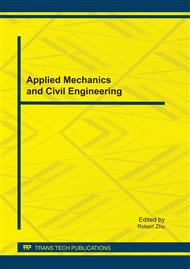p.316
p.322
p.328
p.335
p.344
p.353
p.357
p.362
p.369
Studies on Phytoplankton and Particulate Organic Carbon in the Southern Ocean
Abstract:
Using China Southern Ocean’s study data collected from 1989 to 2009 year, this paper analyzed the related characteristics between phytoplankton abundance, Ch1 a concentrations and particulate organic carbon. The average cell abundance of Southern Ocean phytoplankton was 7.38×104 cells/dm3. The dominant species of Southern Ocean phytoplankton were Fragilariopsis kerguelensis, Fragilariopsis curta, Pseudo-nitzschia lineola, Eucampia antarctica, Thalassiosira antarctica and Corethron criophilum and son on. In Prydz Bay of the Southern Ocean, the contribution of phytoplankton cell abundance and phytoplankton carbon toward particulate organic carbon were higher than that in the Northern Gulf Ocean Area. In the upper layer of euphotic zone, the contribution of phytoplankton abundance and phytoplankton carbon toward particulate organic carbon were higher than that in the deep water district. Through analysis of regressive statistics, phytoplankton cell abundance (y) and particulate organic carbon (POC) and chlorophyll a (Chl a) were a remarkable positive correlation.
Info:
Periodical:
Pages:
344-352
Citation:
Online since:
October 2011
Authors:
Price:
Сopyright:
© 2012 Trans Tech Publications Ltd. All Rights Reserved
Share:
Citation:


